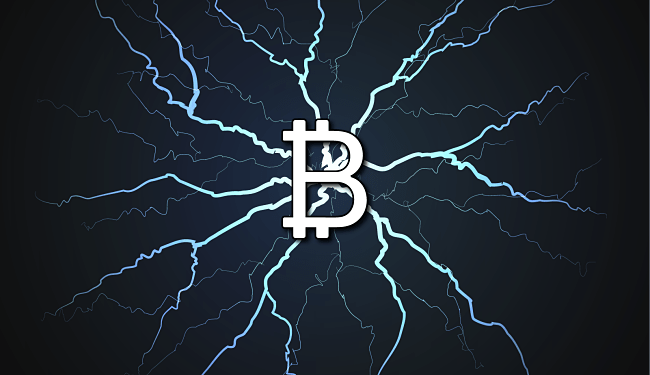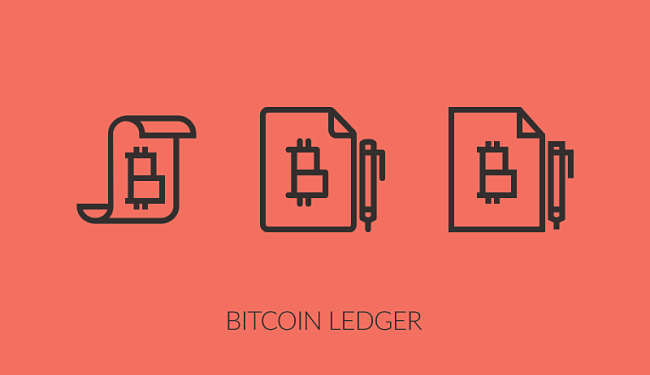On August 24, 2017, an expansion of the Bitcoin network to enable the accommodation of the vastly increased customer base and transaction volumes was carried out. This Segregated Witness (also known as SegWit) implementation was a soft fork change in the transaction processes of Bitcoin.
SegWit was implemented in order to make Bitcoin transactions less malleable and more adaptable to enhancement in the size of the blockchain to increase transaction speeds. It had become clear that a new technology was needed for Bitcoin: one that could provide an extra layer to the existing blockchain to make transactions cheaper and quicker, without altering the basic structure or existing security backing of the network.
SegWit was thus produced to make the development of such technology possible.
The technology that was proposed to address these issues with Bitcoin was the Lightning Network.
- What exactly is the lightning network?
- Why was it implemented?
- How does it work?
- What are its key features?
- Will the Lightning Network revolutionalize Bitcoin?
A proposal for its creation was made in 2015 and for the past two years, Lightning has steadily moved from concept to prototype, on to a more advanced prototype version and now to official launch.
And, here’s some good news:
The three developers working on this new technology have reported successful transactions in recent tests conducted, paving the way for its introduction to the general public.
The Lightning Network was first described by Joseph Poon and Thaddeus Dryja. It was made available as a preview release on December 6, 2017. It is currently being developed by ACINQ, Elements Project (Blockstream) and Lightning Labs. It is written in C, Scala and Go languages. It’s scheduled to be released to the public sometime in 2018.
In some quarters, Lightning Network is known as the technology that makes Bitcoin scalable.
What Exactly is the Lightning Network?

The Lightning Network is a Bitcoin enhancement technology which utilizes an off-chain protocol known as Hashed Timelock Contracts (HTLCs) to create bi-directional payment channels, thus allowing the routing of Bitcoin payments across multiple peer-to-peer payment channels.
This allows entities to make payments to each other even without having direct access to these channels, ultimately improving the speed of validation of transactions and reducing the costs to such transactions.
Why Was Lightning Network Implemented in the First Place?
As the name of the network implies, the Lightning network was primarily setup to improve the speed of Bitcoin transactions, as well as enable payments and transactions on a micro scale using Bitcoin and other cryptocurrencies.
Bitcoin presently has two challenges that create limitations in its scalability.
1. Each new block is limited to just 1 MB in size. This puts a limit on the number of transactions that the Bitcoin network can carry at any point in time. Bitcoin presently handles only 3 transactions per second, whereas card processing company VISA can handle close to 1,700 transactions per second (2016 figures). The increasing volume of transactions on such a limited transacting capacity has thus created a congestion problem.
2. The congestion experienced by Bitcoin network as a result of an astronomical increase in the number of customers and transactions has forced transaction fees upwards. Fees had reached as high as $30 in some cases and under this fee structure, it is too expensive to perform micro-payments.
One of the reasons for the introduction of the Lightning Network is to reduce capacity usage to the point where fees are drastically reduced, thus enabling retail micro-payments to be made on the network.
The other is to reduce congestion on the Bitcoin network by directing transactions with fewer interests off-chain, and enable bi-direction payments without delegating funds or trust to third parties.
This is a change that has been long overdue. Interest in the exchange trading of Bitcoin has increased dramatically from late 2016 to date. This surge in customer and transaction volume has put tremendous pressure on the Bitcoin blockchain, leading to congestion and increased delays in confirmation of transactions. It has also led to a situation where higher fees are being charged for Bitcoin transactions.
Therefore, it became imperative to either expand the network or to create a new alternative which would have superior characteristics to the existing blockchain, while still maintaining the basic functionality.
The answer appeared in the form of the Lightning Network.
How Does it Work?

1. Increasing Transaction Validation Speeds on the Bitcoin Network
The Lightning Network has been created to speed up the validation process of Bitcoin transactions. The present system uses mining rigs and requires computers which can solve complex math problems for transactions to be recorded on the ledger. Transactions can, therefore, take a long time to confirm; up to one hour in some cases.
Increasing transaction volumes without a corresponding increase in the size of the blocks means that congestion and delayed validations on the Bitcoin network is now the order of the day.
According to the Lightning Network’s white paper, Lightning solves the congestion issues being experienced with Bitcoin by using what is known as a Hashed Timelocked Contract (HTLC) between the two parties to the transaction. Under the terms of the HTLC, participants (sender and recipient) agree to transact on a separate channel which is off-chain, and update on the blockchain is done later.
The HTLC uses a hash lock and a time lock to allow the payment emanation party to route payments to the recipient using an off-chain intermediary that is not trusted by either party, while also blocking the external intermediary from stealing any payments that are transmitted using the intermediary’s node.
2. Enablement of Micro-payments
Transactions are time-limited; they are rendered invalid if the timeframe stipulated in the contract elapses. Addition of a new layer to the blockchain will then ease congestion on the network and enable two parties to perform transactions at the microscale with lower transaction fees that approach the marginal cost at which the service is rendered.
What are the key features of the Lightning Network?
- Rapid payments: Speed of payments within a payment channel approaches the speed of data transfer from one entity to another.
- Third-party trust is eliminated. P2P payments in a channel can be done without a third party.
- Reduced blockchain congestion is achieved, as fewer transactions are brought instantly to the blockchain. This permits users of the Lightning Network to make frequent Bitcoin payments without unduly straining node resources that are required for the processing of all transactions on the blockchain.
- Channels can remain open for as long as both parties within the channel decide it can stay open. This also reduces blockchain load.
- Wallets can be made to safely go offline to prevent theft of funds by any party.
- Additional security can be created through the creation of multiple signatures as agreed to by both parties.
Advantages of Using the Network
1. According to Lightning’s developers, the enhancement in speed of transaction validation would enable Bitcoin to be adapted to use in retail point-of-sale terminals as well as for device-based user transactions.
2. Instant payments would become possible with Bitcoin. It would literally be possible to buy pizza from a drive-by using Bitcoin.
3. Lightning is expected to help Bitcoin challenge and compete with other instant payment platforms favourably as well as revolutionize peer-to-peer transactions.
4. It can support transactions across different blockchains.
5. Cooperative transactions are not broadcast on the blockchain, which leaves no trace and therefore protects the privacy of both users.
Disadvantages
1. The only real disadvantage here is that Lightning has not been subjected to widespread use. Therefore, how secure, fast and reliable it is when subjected to usage pressure is still not known.
2. A few apps have been created to run with Lightning, and so far, user reviews have pointed to them as being confusing to use. Some apps such as Zap, still require users to manually configure their nodes and input their IP addresses, which is not something that not-so-tech-savvy users will enjoy.
3. Very few developers are working on the technology. This could delay the onset of widespread use and application of the Lightning Network.
4. A major challenge to Bitcoin storage is the high profile (and sometimes state-sponsored) hack attacks that have occurred on exchanges and mining platforms. Will Lightning be able to stand up to these or will the off-chain transaction process make Bitcoin more vulnerable? This is presently unknown.
Will Lightning Network Revolutionalize Bitcoin?

All that is left now is for Lightning’s developers to let it loose from its cage and see how it does in the open market. No doubt, some bugs will come up but these will not be things that cannot be fixed.
Ethereum’s developers seem to have seen the potential in Lightning and fear that it will challenge it for cryptocurrency market share in terms of deployment in smart contracts. That is probably the reason why Vitalik Buterin, co-creator of Ethereum, recently announced on the Ethereum blog that the Ethereum Foundation was setting up a subsidy program for developers who could implement a scalable solution to increase the number of transactions that could be handled on the Ethereum network.
Apart from the obvious potentials in improving Bitcoin’s usage in peer-to-peer decentralized transactions, the advent of the Lightning Network has also stimulated a discussion among cryptocurrency creators on improving the scalability of their networks to cope with increased adoption and traffic among end-users. This can only be a good thing for today’s cryptocurrency consumers.
So, good luck with your cryptocurrency investing journey. Could you share how much you’ve gained during the end of the year and what coin(s) did you invest in and why?